Newport Ship: Medieval vessel is 'world's largest 3D puzzle'
- Published
Newport's medieval ship has become one of Wales' biggest historical finds
With almost 2,500 pieces, measuring 30 metres and weighing 25 tonnes, it has been called the world's largest 3D puzzle.
Archaeologists can now, after 20 years of painstaking restoration, start to reassemble the wreck of a 15th Century ship found in a south Wales riverbank.
Experts believe the medieval vessel is as significant a find as the Mary Rose - and it is a century older.
"The ship is of global significance and interest," said TV historian Dan Snow.
Specialists have been working on the Newport Ship conservation project since the discovery of almost a third of the former wine- trading vessel and 1,000 medieval artefacts in the banks of the River Usk in 2002.
They have reached an important milestone on Thursday as all of its timbers, which had been preserved for more than 550 years, have now dried out and restored ready to go on display.
The team working on the multi-million pound project are now planning the world's largest attempt to put an archaeological ship back together.
"We have a massive, flat-pack ship that we need to reassemble and there are no instructions," said the project's curator Toby Jones.
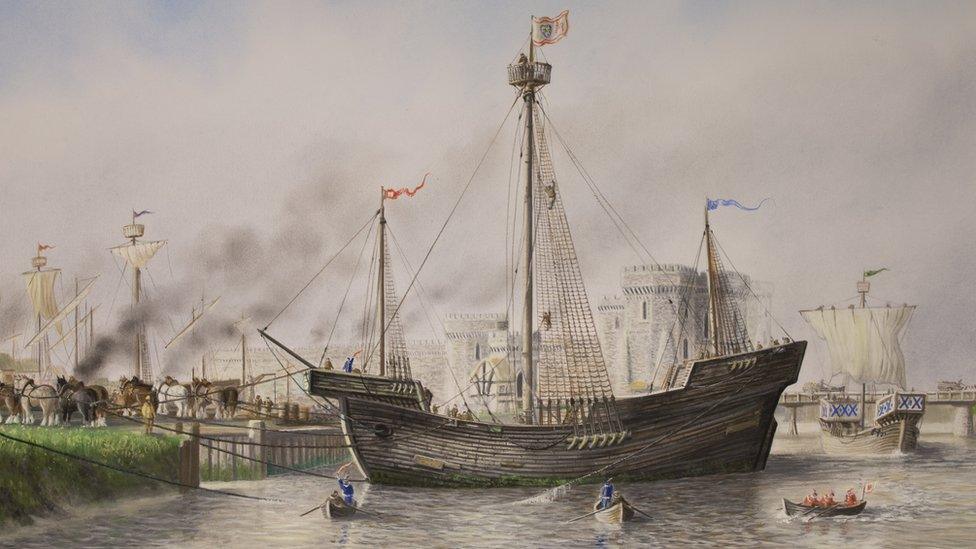
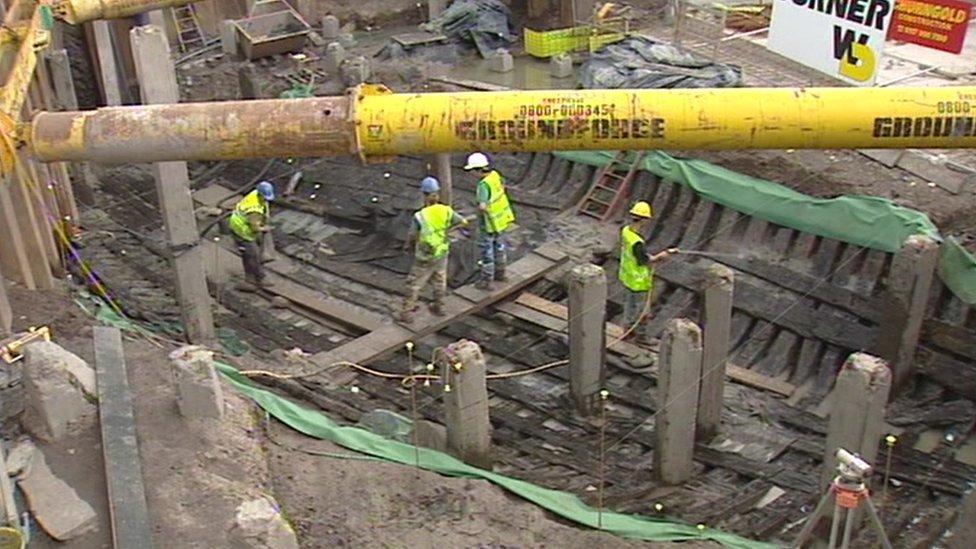
This is what builders uncovered in 2002 when constructing a new theatre in Newport
"There is going to be a lot of fitting, checking and disassembling and fitting again and again.
"There are archaeological ships on display around the world but nothing from the period of the 15th Century so this is what makes this so significant and special. We have an actual medieval ship that's totally unique."
Tudor king Henry VIII's flagship naval vessel the Mary Rose is perhaps the most famous 16th Century ship on display while the Vasa in Sweden is the 17th Century equivalent.
Now historians say the Newport Ship will be the only 15th Century maritime exhibit on show anywhere in the world.
"The Mary Rose has been top billing since it was found and raised in 1982 as so many people remember it, now the Newport Ship is up on that scale," said Mary Rose's head of conservation David Pearson.
"It can give us so much information as to what life was like in the mid-1400s and we can learn from the late medieval shipbuilding and from items found on board."
About £8m has already been spent preserving and restoring the timbers, which has included freeze-drying the wood at the Mary Rose museum in Portsmouth.
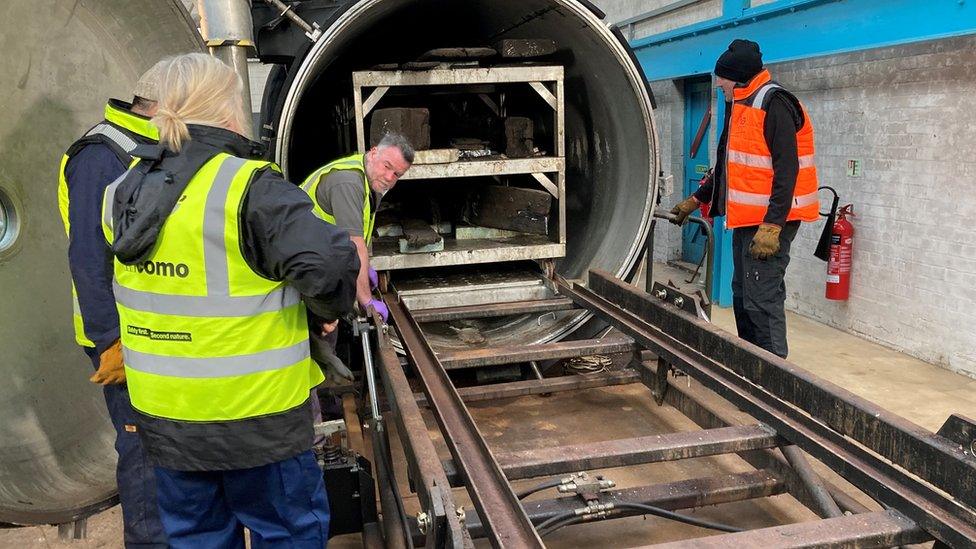
Timbers from the Newport Ship being removed from the freeze drier machine at Portsmouth's Mary Rose Museum
The team made their final visit to England's south coast on Thursday to pick up the last batch of about 100 timbers and return them to Newport, ensuring they are all under one roof again for the first time in years.
Then historians hope to put the wreckage back together and have it on display within the next five years.

'It's like a time capsule'

Dan Snow believes the Newport Ship answers many questions about our history
"The Newport Ship tells us a bunch of things that the Mary Rose can't," said TV historian Dan Snow.
"The Mary Rose was a Tudor vessel, it feels like an early modern vessel, while the Newport Ship is a trading ship operating at the beginning of a revolution in European shipbuilding.
"It was at a time when those living along the Atlantic seaboard; the Welsh, people from Brittany, northern Spain, Portugal, Devon and Cornwall were starting to go to sea in bigger and stronger ships that would allow them to eventually cross the Atlantic and into the Indian Ocean.
"So the Newport Ship symbolises the birth of this era of European exploration and comes at a very important time in maritime history - just a generation before Christopher Columbus set out across the Atlantic.
"It's the birth of an era that changed the world in every way imaginable. People talk about globalisation and international trade as if it's something recent, this ship shows that way back in our medieval past we had strong links with Europe and we were trading and drinking French wine.
"The Newport ship is one of the most interesting and important shipwrecks found in British waters in a generation.
"It's a truly international find; the wood came from northern Spain and wine from France. It's like a time capsule, a piece of the 15th Century delivered to us here in the 21st Century.
"This is something that's going to be of global significance and interest. Tourists will be coming from all over the world as it's very well preserved."

Why was it in Newport?
It is thought the 30 metre (98ft), 400 tonne, medium-sized boat was having a refit following a voyage from the Iberian Peninsula to Bristol.
This was taking place in a River Usk inlet in 1468 or 1469 when its moorings broke.
Much of the oak planks and iron were stripped before the tide hid the stricken remains, with a third of the vessel succumbing to its muddy grave - lying untouched for more than five centuries.
Economic impact assessments predict the preserved boat could attract up to 150,000 visitors a year - making it one of Wales' most popular tourist attractions - and boost the south Wales economy by £7m a year.
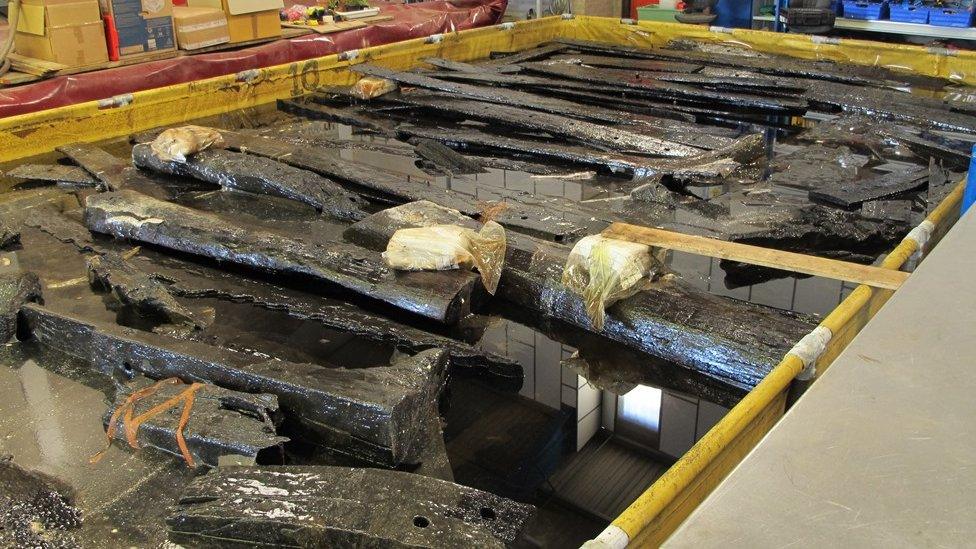
The 2,500 planks from the Newport Ship were held in wax for four years as part of the restoration process
Archaeologists plan to allow the public in to watch them reassemble the remains when a venue big enough is secured to take the boat.
"You cannot build this thing then move it," added Mr Jones.
"You can only build it in its final position, but when it is done, it will be stable and has the potential for being on display in perpetuity."
Newport council, who have led conservation work, will soon start a feasibility study to look at where best to house the ship - with an empty department store a possibility.
"We're keen to find a home which maximises accessibility for everybody as we want to share this great treasure," said Newport council leader Jane Mudd.
"The potential economic benefits are important too - and as more than 1,000 people attend talks on the Newport Ship, it indicates there is huge interest."

THE LEARNERS: It's a new term in the beginners' Welsh language class
A SPECIAL SCHOOL: Behind the scenes at a school like no other

- Published27 January 2020

- Published26 April 2017

- Published8 December 2014
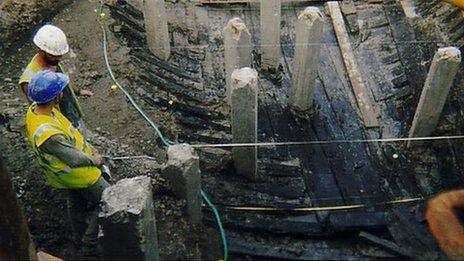
- Published8 August 2014

- Published19 September 2012
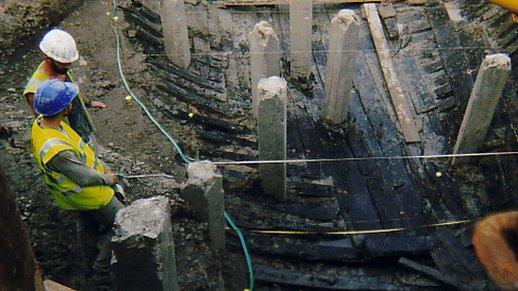
- Published29 December 2011
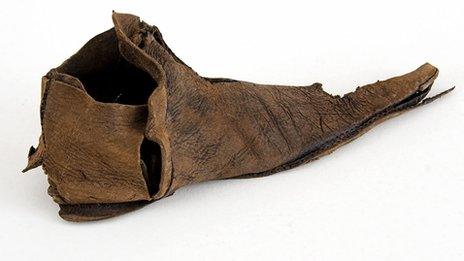
- Published10 October 2011
- Published9 October 2010